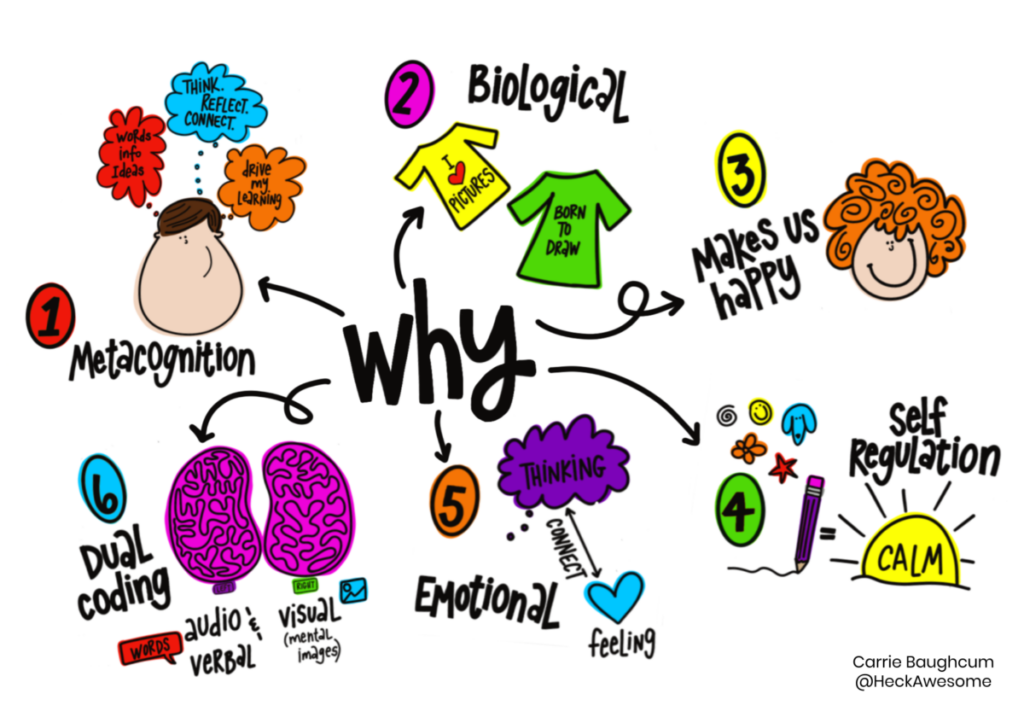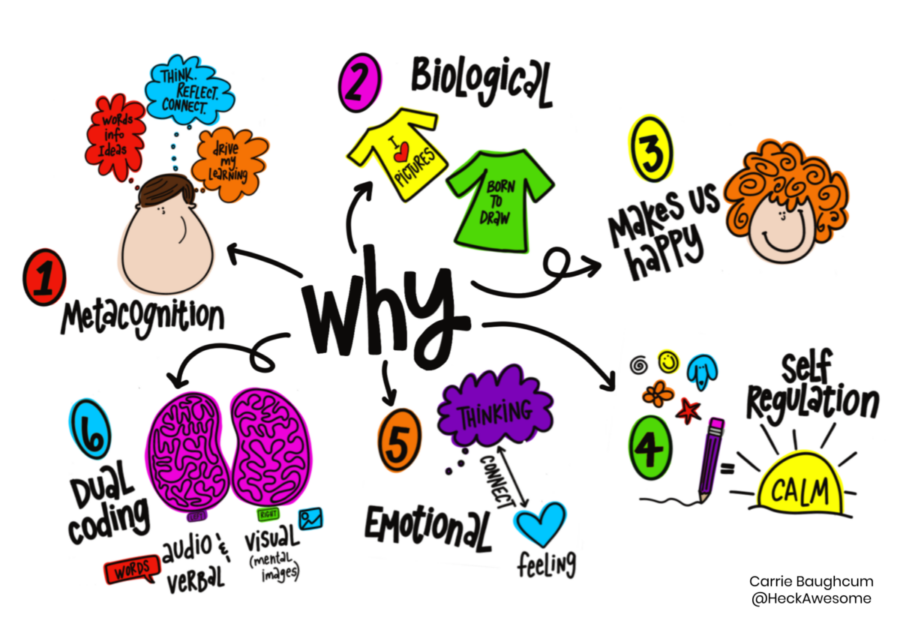This week we covered a few more of mayors principles of multimedia learning, and I found sketchnoting particularly interesting. I’ve used sketchnoting a lot in the past, my high school teachers used to call them super awesome study sheets (SASS), and I never knew they were an actual tool for communicating complex ideas.

Sketchnotes are visual, with few words. They include drawings, handwriting, shapes, and many visual elements, such as arrows, squiggles and boxes. Essentially, sketchnotes are a great way of summarizing a lot of information on one sheet of paper. “Sketchnoting For College Students,” by Doug Neil (2016), explained that sketchnoting can be a very useful tool for university students. Sketchnoting allows us to summarize key information and ideas from each course we are in. If we make a sketchnote for each unit for each class, we will have great summaries for studying for midterms and final exams!

When I use sketch notes in my courses, I find it easy to go back and find all the important information I need when studying for midterms and finals. I would recommend this to anyone, and I highly suggest buying yourself a big whiteboard for your apartment or dorm so that you can lay it on the ground and write down all the key information on one board for each unit or midterm topic. This is how I study for all my university courses; it has been like saving. If I was a teacher planning learning activities for my students, I would have them create sketch notes to summarize the unit once it has been completed. My high school teachers used to do this with me, and I still haven’t gone and looked back at them to this day.
I hope you enjoyed it!
Amelia
References
Neil, D., (2016, March 1). Sketchnoting for College Students. YouTube. Retrieved September 22, 2022, from https://www.youtube.com/watch?v=l8qT7zAPcKk
Schwartz, K. (2019, November 3). Why teachers are so excited about the power of sketchnoting. KQED. Retrieved September 22, 2022, from https://www.kqed.org/mindshift/54655/why-teachers-are-so-excited-about-the-power-of-sketchnoting

